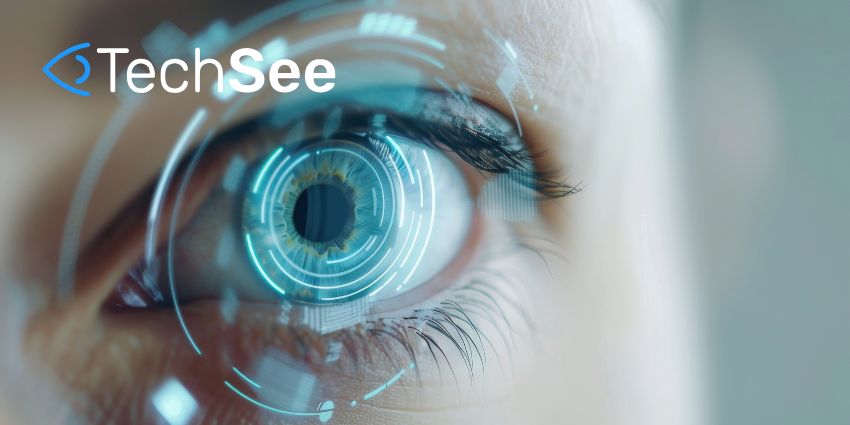AI’s transformative power in revolutionizing customer service has never been more evident. Historically, AI was utilized to process structured data, like text, to automate responses and simplify service tasks. However, recent advancements in multimodal models and computer vision have expanded AI’s boundaries, heralding a new era where visual intelligence transforms how contact centers operate, offering groundbreaking levels of customer engagement.
Visual intelligence presents a revolutionary approach – empowering businesses to significantly enhance their understanding and resolution of customer issues. Advanced AI systems now interpret multimedia, including images and videos, with remarkable speed and precision. This enables businesses to create innovative solutions for complex satisfaction challenges while simultaneously boosting operational efficiency and reducing costs. As industries undergo digital transformation, visual intelligence is proving essential in delivering outstanding customer experiences, bolstering brand loyalty, and driving innovation.
Modern contact centers are leveraging AI to improve the quality of their interactions with clients, maximizing positive outcomes and customer satisfaction. This cutting-edge technology allows businesses to take an omnichannel approach, accommodating not only traditional text and voice channels but also integrating visual mediums. Visual intelligence doesn’t just complement existing channels – it transforms them, creating more dynamic interaction spaces.
Revolutionizing Customer Interactions with Visual Intelligence
The rapid adoption of visual intelligence marks a critical evolution in how businesses engage with clients. By harnessing technologies such as computer vision, AI-driven image recognition, and augmented reality (AR), organizations can provide seamless, instant support experiences that resonate deeply with consumer expectations. This means visual intelligence tools can comprehend and process video data to aid real-time decision-making processes and streamline customer journey paths, paving the way for unprecedented efficiency.
An example is the home appliance repair industry. Visual intelligence allows agents to remotely diagnose and troubleshoot issues via real-time video feeds, giving precise, step-by-step instructions that empower customers. This innovative strategy reduces downtime, translating to enhanced cost-efficiency for both service providers and customers. It also paves the way for preventive maintenance and diagnostics, potentially solving issues before they escalate into serious problems. This refined user experience, supported by interactive, real-time engagement, increases customer confidence. Over time, this leads to reduced call handling times and improved first-contact resolution rates, fostering increased customer loyalty and generating invaluable word-of-mouth referrals.
The shift to visual intelligence doesn’t merely change interaction paradigms; it profoundly transforms company-client partnerships. Customers begin to see contact centers less as problem-resolving entities and more as proactive experience enhancers. This transformation strengthens customer relationships and contributes to business growth by improving service quality and establishing trust.
Expanding Applications Across Industries
Visual intelligence is finding applications across diverse sectors, each leveraging its unique capabilities to optimize operations. In retail, AI-powered cameras assess customer preferences and behaviors and monitor foot traffic patterns, enabling stores to adjust layouts and personalize offerings to effectively meet consumer demand. In the insurance sector, visual intelligence accelerates claims processing, quickly analyzing damage images to ensure precise, timely assessments and foster swift settlements.
In the automotive industry, visual intelligence offers significant advantages. Technicians use AI to evaluate vehicle conditions remotely, facilitating guidance for essential inspections before in-person services. This process simplifies arrangements, curtails unnecessary travel, prevents delays, and enhances service efficiency and satisfaction. Consequently, visual intelligence fosters dependable service relationships and fortifies the trust between companies and their customers.
These intelligent systems also provide diversity and inclusivity enhancements, such as understanding sign language through video, ensuring wider accessibility and service for all customers. Across industries, visual intelligence streamlines operations while building consumer trust through transparency and fostering reliable partnerships. Companies are leveraging this capability to create ecosystems that not only respond but also proactively address future needs.
Transforming the Future of Customer Service
The development of visual intelligence technologies is expected to significantly impact the future of customer service. Anticipated advancements include AI systems that predict issues before they occur, delivering proactive solutions that exceed customer expectations. These systems leverage previous interactions to craft personalized engagement strategies, aiming to enhance satisfaction and nurture long-lasting relationships.
Visual intelligence’s potential to empower employees is also notable. By automating routine analysis tasks, AI reduces workload pressures on agents, allowing them the time to foster more meaningful interactions with clients, hone problem-solving capabilities, and enhance engagement. This shift promotes a culture of continuous improvement and learning, essential for organizations intently focused on maintaining competitive advantages in dynamic markets. As AI becomes more intuitive, agents can refocus their roles towards providing empathy-driven, human-centric service.
Adapting to Change: Preparing for a Visual Intelligence Revolution
Navigating the complexities of integrating visual intelligence requires adaptability and innovation. Enterprises must invest in technologies that seamlessly integrate with existing infrastructure and ensure employees are fully trained to leverage advanced tools effectively. This training not only includes technical proficiency but also skills to interpret AI-generated insights and actions meaningfully.
Mastery in visual intelligence integration offers organizations a substantial competitive edge, enabling excellence in service delivery and agility in adapting to market shifts. For visionary companies, visual intelligence presents limitless opportunities. It represents a future-ready service innovation that elevates standards, enhances operational efficiency, and improves overall customer satisfaction. Companies poised to adapt these technologies will likely establish new benchmarks in customer experience standards.
As customer expectations evolve and the realms of what’s possible in customer service expand, visual intelligence stands as a beacon pointing towards a more integrated, efficient, and human-centric future.







